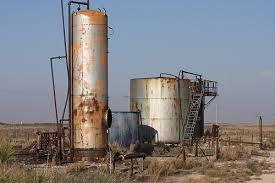
DEMAND UP TO 1.4 MBD

EIA wrote, global consumption of petroleum and other liquid fuels is estimated to have grown by 1.4 million b/d in 2015. EIA expects global consumption of petroleum and other liquid fuels to again increase by 1.4 million b/d in both 2016 and 2017, mostly driven by growth in countries outside of the Organization for Economic Cooperation and Development (OECD). Non-OECD consumption growth was 1.0 million b/d in 2015, and it is expected to be 1.3 million b/d in 2016 and 1.5 million b/d in 2017.
India and China are expected to be the largest contributors to non-OECD petroleum consumption growth, with each country's consumption forecast to grow by 0.4 million b/d annually in both 2016 and 2017. In India, consumption growth is mainly a result of increased use of transportation fuels and of naphtha for new petrochemical projects. China's growth in consumption of petroleum and other liquid fuels is driven by increased use of gasoline, jet fuel, and hydrocarbon gas liquids (HGL), which more than offset decreases in diesel consumption. Last year's significant rise in the use of HGL in China will continue through the forecast period, as new propane dehydrogenation (PDH) plants increase the use of propane.
OECD petroleum and other liquid fuels consumption rose by 0.5 million b/d in 2015. OECD consumption is expected to increase by 0.1 million b/d in 2016 and be relatively flat in 2017.
Non-OPEC Petroleum and Other Liquid Fuels Supply
EIA estimates that petroleum and other liquid fuels production in countries outside the Organization of the Petroleum Exporting Countries (OPEC) grew by 1.6 million b/d in 2015, with more than half of the growth occurring in North America. EIA expects non-OPEC production to decline by 0.6 million b/d in 2016 and by 0.4 million b/d in 2017.
Changes in non-OPEC production are largely driven by changes in U.S. tight oil production, which has high decline rates for production and relatively short investment horizons, making it among the most price-sensitive oil producing regions. Forecast total U.S. production of liquid fuels declines by 0.4 million b/d in 2016 and by 0.2 million b/d in 2017, as declining onshore crude oil production is partially offset by expected growth in HGL production, Gulf of Mexico crude oil production, and liquid biofuels production. Outside the United States, non-OPEC production declines by 0.2 million b/d in both 2016 and 2017.
Among non-OPEC producers outside the United States, the largest declines in 2016 are forecast to be in China. EIA expects China's output to fall by 180,000 b/d in 2016 and by an additional 80,000 b/d in 2017 because of continued investment cuts and because of fewer new offshore developments. In 2017, the largest declines are in the North Sea and in Russia, which are forecast to decline by 200,000 b/d and 150,000 b/d, respectively, following forecast production growth in both areas this year.
Canadian production is expected to grow in both 2016 and 2017, although annual growth in 2016 will be less than 0.1 million b/d because of production lost to wildfires in Alberta that resulted in oil sands outages in May and June, and to a lesser extent in July. However, Canadian production is expected to increase by 0.2 million b/d in 2017.
Non-OPEC unplanned supply outages in July were about 0.5 million b/d, a decrease of 0.3 million b/d from the June level. The decrease in unplanned outages was the result of Canadian oil sands production gradually returning from wildfire-related outages that began in May. Overall, Canada's outages averaged 0.4 million b/d in June and less than 0.1 million b/d in July.
OPEC Petroleum and Other Liquid Fuels Supply
OPEC crude oil production averaged 31.8 million b/d in 2015, an increase of 0.8 million b/d from 2014, led by rising production in Iraq and Saudi Arabia. Forecast OPEC crude oil production rises by 0.7 million b/d in 2016, with Iran accounting for most of the increase and by an additional 0.6 million b/d in 2017. The forecast does not assume a collaborative production cut among OPEC members and other producers, as major OPEC producers are expected to continue their strategy of maintaining market share.
OPEC noncrude liquids production averaged 6.6 million b/d in 2015 and is forecast to increase by about 0.3 million b/d in both 2016 and 2017, led by increases in Iran and Qatar.
OPEC unplanned crude oil supply disruptions averaged 2.3 million b/d in July, a small increase compared with June because of higher outages in Nigeria and Libya. In Nigeria, disruptions averaged 0.7 million b/d during July, 0.1 million b/d more than in June. The increase in outages comes as militants targeted pipelines that transport Bonny Light crude oil. Meanwhile, Forcados volumes also remain offline, and likely will not return to service until September when the pipeline that transports the crude oil to market is back online. In Libya, nearly 1 million b/d of crude oil remains shut in, with production at 0.3 million b/d in July. Although the Hariga export terminal reopened in late July, the Sarir field remained offline, with 0.1 million b/d shut in.
OPEC surplus crude oil production capacity, which averaged 1.6 million b/d in 2015, is expected to be 1.5 million b/d in 2016 and 1.3 million b/d in 2017. Surplus capacity is typically an indicator of market conditions, and surplus capacity below 2.5 million b/d indicates a relatively tight oil market. However, high current and forecast levels of global oil inventories make the forecast low surplus capacity less significant.
OECD Petroleum Inventories
EIA estimates that OECD commercial crude oil and other liquid fuels inventories were 3.00 billion barrels at the end of 2015, equivalent to roughly 66 days of consumption. Forecast OECD inventories rise to 3.08 billion barrels at the end of 2016 and then fall to 3.03 billion barrels at the end of 2017.
-----
Earlier:








